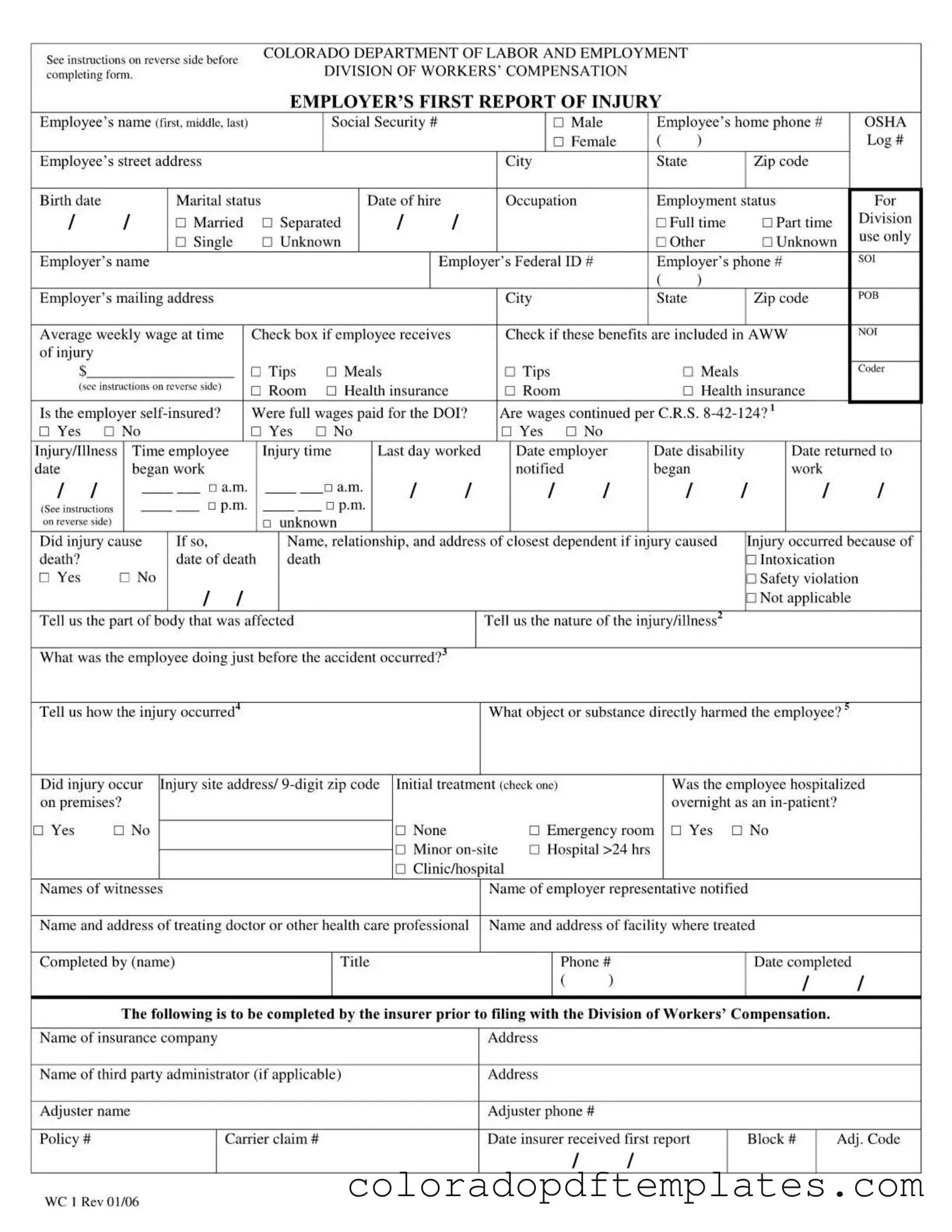The Colorado WC 1 form is the Employer’s First Report of Injury. It is required to report workplace injuries or occupational diseases to the insurance carrier and the Colorado Division of Workers’ Compensation. This form must be completed for all injuries, regardless of severity, that result in lost time from work or permanent impairment.
The employer is responsible for completing the WC 1 form. This includes providing detailed information about the injured employee, the nature of the injury, and the circumstances surrounding the incident. It is crucial that the form is filled out accurately and completely to comply with Colorado workers' compensation laws.
The form must be submitted to the insurance carrier within ten days of the employer’s knowledge of the injury or occupational disease. In cases of fatalities, the report should be submitted immediately. Timely reporting is essential to ensure that the injured employee receives the necessary benefits.
The form requires various details, including:
-
Employee's name and contact information
-
Date of hire and employment status
-
Details of the injury, including date, time, and nature of the injury
-
Average weekly wage at the time of injury
-
Information about any witnesses and medical treatment received
All sections of the form must be completed to meet legal requirements.
Failure to complete the WC 1 form accurately can lead to delays in benefits for the injured employee. It may also result in penalties for the employer, including potential legal consequences. Ensuring that all information is correct and complete is critical to avoid complications.
Can the employee choose their own doctor?
Generally, the employer has the right to select the physician who treats the injured employee. However, employees may have options under certain circumstances. It's important for employees to understand their rights regarding medical treatment following a workplace injury.
What should be done if the injury leads to long-term disability?
If the injury results in long-term disability, it is essential to notify the insurance carrier immediately. The WC 1 form should be updated with any new information regarding the employee's condition. Additionally, employees should report any changes in their ability to work or any new medical information that may affect their benefits.
